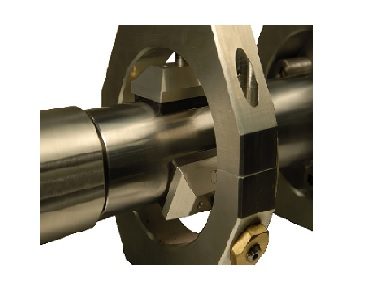
Balance Bearings
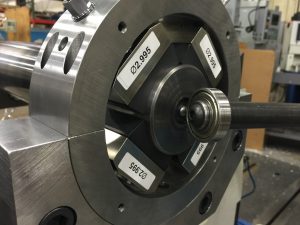
New Way Air Bearings now offers externally pressurized air bearings for non-contact support of rotors during balancing operations. The non-contact air bearings eliminate damage to the rotor from hard rollers and the mess of oil film bearings in vacuum chambers. Most importantly the air bearings provide a more precise axis of rotation with a cleaner signal for higher resolution in balancing.
For both hard and soft balancing machines, mechanical, electrical and audible noise in balancing operations is reduced by supporting the rotor being balanced on air bearings. When a rotor is still supported in rotation by hard rollers, (Fig. 1) it is not just the rotor that is turning, there are other motions that cause rotor motions and mask out of balance force.
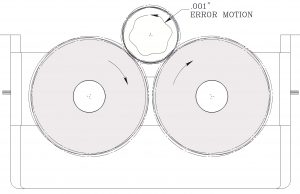
Figure 1. Hard Rollers Support the roller, which can cause motion errors that exceed 0.001 in. (0.0254mm)
For instance, combined errors from runout of the four supporting rollers cause asynchronous motion errors of the supported rotor that often exceeds .001 of an inch. Alternatively, with the rotor supported on air bearings, the roundness of the journal (often .0001 of an inch or better) is the only rotating reference surface and so the motion errors will be synchronous and averaged, so there will be less than one tenth of amplitude of the hard rollers’ motion errors. This results in a clean signal that is exactly the same each revolution, allowing for a finer resolution in balancing.
A rotor supported on rollers will also see some axial forces from misalignments of the rollers. Changes in this axial force, say from changes in unbalance force, are likely to be almost synchronous, but out of phase enough to obscure balance resolution. Air bearings impart zero axial force on the rotor, avoiding this error source. The radial friction is also near zero and so the heavy spot finds the low point of rotation when the air pressure is supplied to the air bearings. This improves the resolution in static balancing by an order of magnitude, because the static breakaway coefficient of friction of air bearings is 10 times lower than that of rolling elements for a typical roller stand, or horizontal-way static balancing set-up.
New Way provides “bolt-on” adaptive hardware for implementing air bearings into existing low speed balance machines (Fig. 2). The adaptive hardware, in turn, accommodates New Way’s gas bearing hardware, which is easily assembled to the adaptive hardware. In the image shown below, the balancing machine’s yoke is shown on the right hand side, and New Way’s adaptive hardware and gas bearings are shown on the left hand side. The adaptive hardware uses the same mounting features as the original hard rollers.
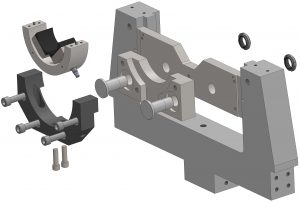
Fig. 2 – Adaptive Hardware allows Externally-Pressurized Porous Media Gas Bearings to easily be retrofit a balancing machine, replacing hard rollers
To further simplify air bearings for balance machine applications, New Way has designed the bearing pads to “snap on/snap off”, as shown in the image below (Illustration 4). This feature allows for several varying sizes of bearing pads to be easily switched out, allowing the balance machine operator to easily balance rotors with different journal sizes without having to adjust or plumb air into bearings. (See video at https://www.youtube.com/watch?v=qEWo6jkbOIA )
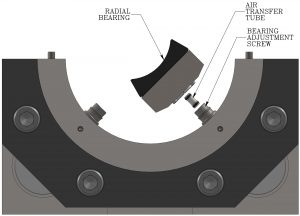
Fig. 3 – “Snap Joint” promotes easy removal and replacement of bearing pads, allowing for different sized rotors to be balanced
An additional and very practical benefit of replacing the hard rollers with air bearings is that the rotor can be supported on its bearing journals without fear of damage to the bearing surface from point contact with a hard roller or from contamination between the rolling surfaces at speed. Balance Bearing faces are made from graphite, presenting a relatively soft, large contact area and non-scoring bearing surface should contact occur.
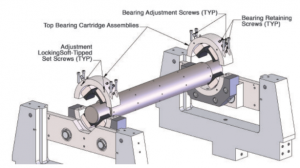
Fig. 4 – Externally-Pressurized Porous Media Gas Balance Bearings replace hard rollers in a low-speed balancing machine
In high speed or “at speed” balancing, the stiffness and damping function of the support bearings becomes critical for good balancing (Fig. 5). At least partly for this reason, large rotors are often balanced on their operational hydrodynamic oil bearings, although hydrodynamic oil bearings can make an oily mess of the rotor in vacuum environments. This is especially an issue for motors and generators with electrical windings, but oil is still a mess for any bladed roller. The air bearings eliminate the need to flood, contain and collect oil in vacuum, yet use so little air that vacuum pressure in the bunker is not affected.
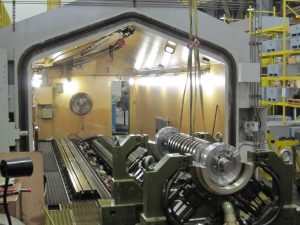
Fig. 5 – Externally-Pressurized Porous Media Gas Bearings can be used in high-speed balance operations

